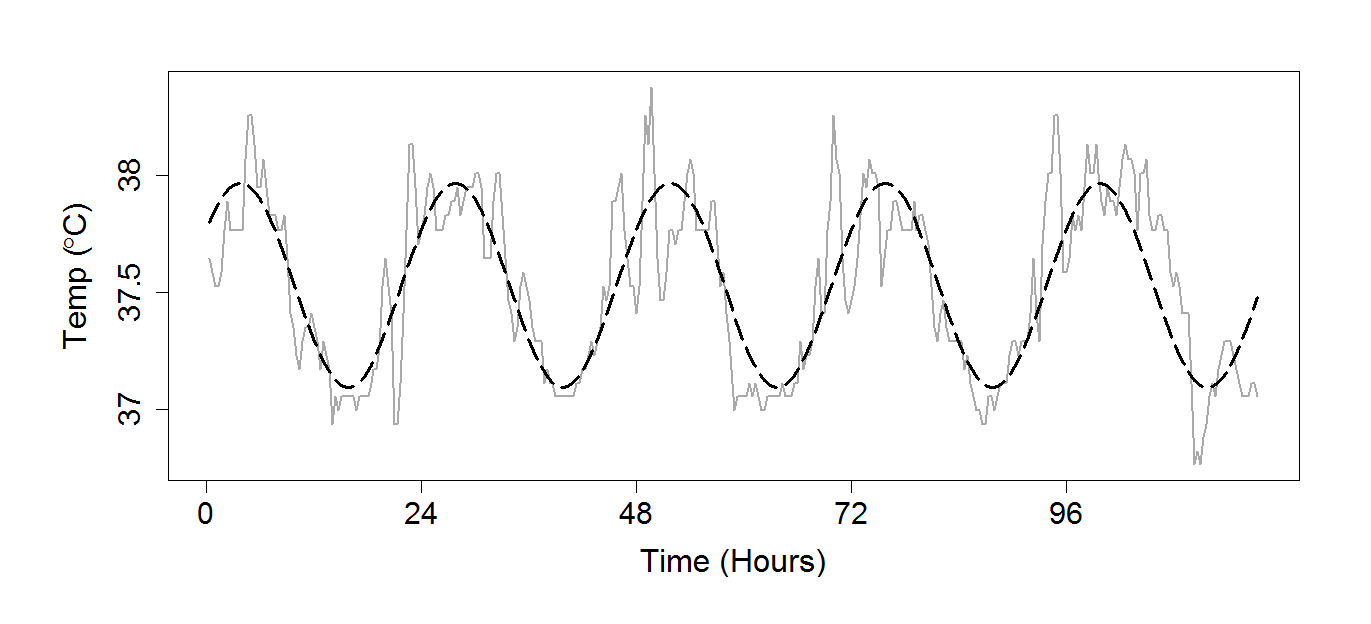# Code initially written by Rob Kass, Revised by Patrick Foley.
# First read in the temperature data, and assign column names.
temperatureDF <- read.table("data/temp.dat", col.names = c("Temp", "Time"))
temperature <- temperatureDF$Temp
time <- temperatureDF$Time
# We now want to regress our data against sinusoids with a period of 72.
# First create the sinusoids.
cosine <- cos(2 * pi * time/72)
sine <- sin(2 * pi * time/72)
# Then fit a linear model.
lm.temperature <- lm(temperature ~ cosine + sine)
# Now set up the jpeg for figure 18.2, which shows the raw temperature
# data as well as a single frequency model.
jpeg("figure18.2.jpg")
par(oma = rep(2, 4))
par(mar = c(4, 5, 1, 1))
plot(time, temperature, type = "l", lwd = 2, col = "darkgrey", xaxt = "n", yaxt = "n", xlab = "Time (Hours)", ylab = expression(paste("Temperature (",degree,"C)")), main = "", cex.lab = 1.6)
# The parameters lty and lwd correspond to "line type" and "line
# width", respectively. The 'fit' object gives the fitted values.
lines(time, lm.temperature$fit, lty = 5, lwd = 3)
axis(1, at = seq(from = 0, to = 288, by = 72), labels = seq(from = 0, to = 96, by = 24), cex.axis = 1.5)
axis(2, at = seq(from = 36.5, to = 38.5, by = 0.5), labels = seq(from = 36.5, to = 38.5, by = 0.5), cex.axis = 1.5)
dev.off()

